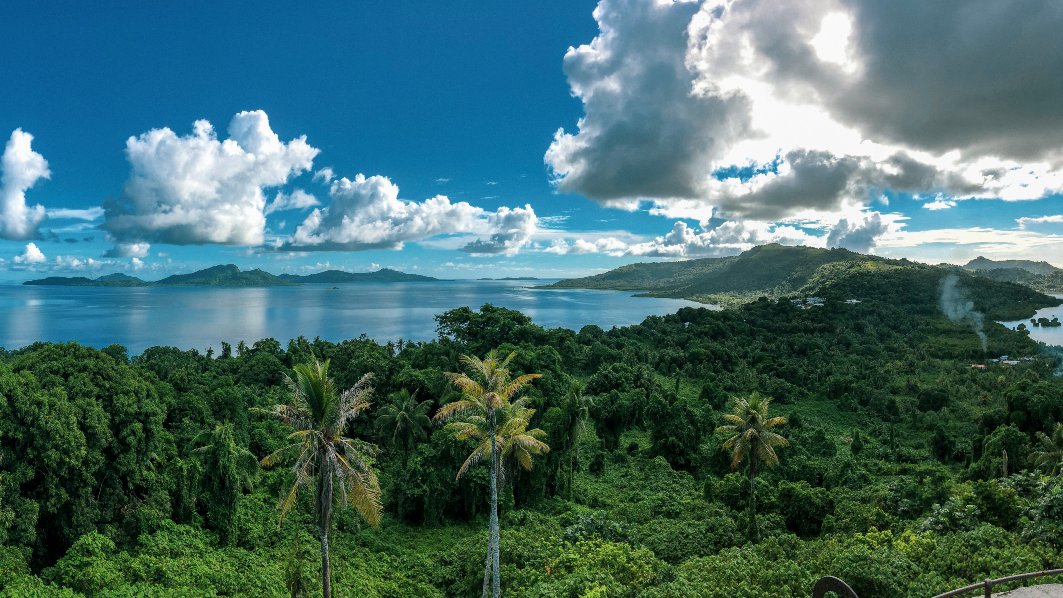
At-risk islands are missing from climate change models
Urgent international cooperation is required to provide small island states and territories with the information they need to respond effectively to the existential threat of climate change.
Many parts of the world most at risk of sea level rise and other damaging impacts of climate change are among the least prepared to meet these challenges, because current climate models don’t accurately represent such small geographic areas.
The majority of global models used to predict future climate and weather change operate with a resolution of 100km or larger, meaning many small islands, territories and atolls effectively do not exist in these simulations.
Writing in the journal Nature Climate Change, researchers from Australia, France, Jamaica, New Zealand, and New Caledonia have called for rapid global and regional cooperation to develop projections compatible with small-island scales.
To solve the problem, projections will require an ultra high resolution of 1km or better, and it will take world-wide cooperation, investment and innovation to achieve this goal, including the use of artificial intelligence and machine learning to reduce computing costs.
Sea level rise in particular poses an existential threat to some low-lying atolls, while questioning the long-term livability of the densely populated coastal areas of taller islands.
The populations of small islands are also impacted by a variety of climatic hazards including marine and atmospheric heatwaves (that increasingly threaten fragile ecosystems such as coral reefs), heavy precipitation and floods, storms, landslides, drought, severe winds, and wildfire.
The distribution of important infrastructure, including airports, harbours, hospitals and emergency services, as well as ecosystems and historical or cultural sites over a small area further increases vulnerability, particularly for mountainous islands with limited flat terrain.
In order to better grasp the risk to small islands posed by climate change, researchers need to understand how it will impact this wide variety of oceanic and atmospheric hazards, beyond simply large-scale sea level rise.
The latest Intergovernmental Panel on Climate Change (IPCC) assessment reports provide evidence of sea level rise and increasing hot extremes on islands that are confidently projected to increase.
However, future projections of other climate hazards, such as floods, landslides, drought, severe winds, and fire weather, have low confidence, due to the low resolution of most global climate models.
The problem extends to coastal and lagoon areas, which are inaccurately represented in low resolution models as open and deep ocean rather than as an island and its shallow waters.
The Coordinated Climate Downscaling Experiment (CORDEX) projections enable resolutions ranging from 50km to 12.5km, which captures larger islands but still skips over small islands, atolls and lagoons, particularly in the Pacific Ocean.
This lack of accuracy fails to capture the differences in climate between islands and the surrounding ocean. These differences include the presence of steep mountains influencing rainfall, tropical cyclones making landfall, and the specific hydrodynamic processes taking place in lagoons and coral reefs.
How these island climate processes will change with global warming remains largely unknown, but it’s this missing information that is the key to understanding how climate change risks will evolve over small island states and territories.
The research was led by Professor Jason Evans of UNSW Sydney, a member of the ARC Centre of Excellence for 21st Century Weather and the ARC Centre of Excellence for Climate Extremes.
It also featured contributions from researchers at:
- Météo-France, École Nationale de la Météorologie, Toulouse, France & CNRM, Université de Toulouse, Météo-France, CNRS, Toulouse, France
- ENTROPIE (IRD, Ifremer, Université de la Nouvelle Calédonie, CNRS, Université de la Réunion), Noumea, New Caledonia
- Department of Physics, The University of the West Indies, Mona, Jamaica
- Commonwealth Scientific and Industrial Research Organisation (CSIRO), Melbourne, Australia
- National Institute of Water and Atmospheric Research (NIWA), Wellington, New Zealand
- Météo-France, interregional office in New Caledonia and Wallis-and-Futuna, Noumea, New Caledonia.
To read more, go to: https://www.nature.com/articles/s41558-024-02028-9
C. Menkes and A. Peltier acknowledge funding from CLIPSSA (AFD,IRD, Météo-France) and SPC-climate Flagship. A. Belmadani acknowledges funding from Agence Nationale de la Recherche – France 2030 as part of the PEPR TRACCS programme under grant number ANR-22-EXTR-0011. P Gibson acknowledges funding from the New Zealand MBIE Endeavour Smart Ideas Fund (C01X2202).
